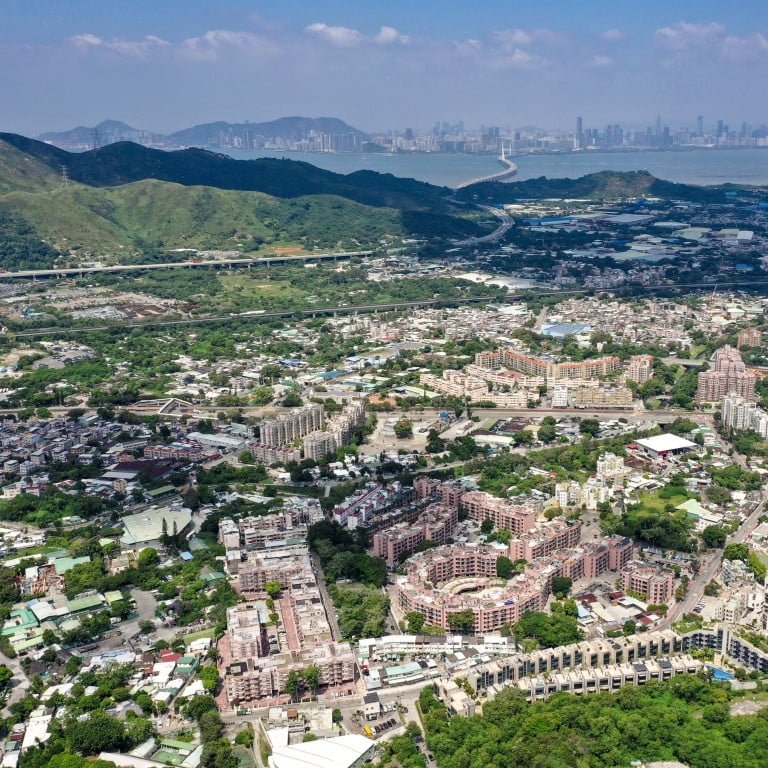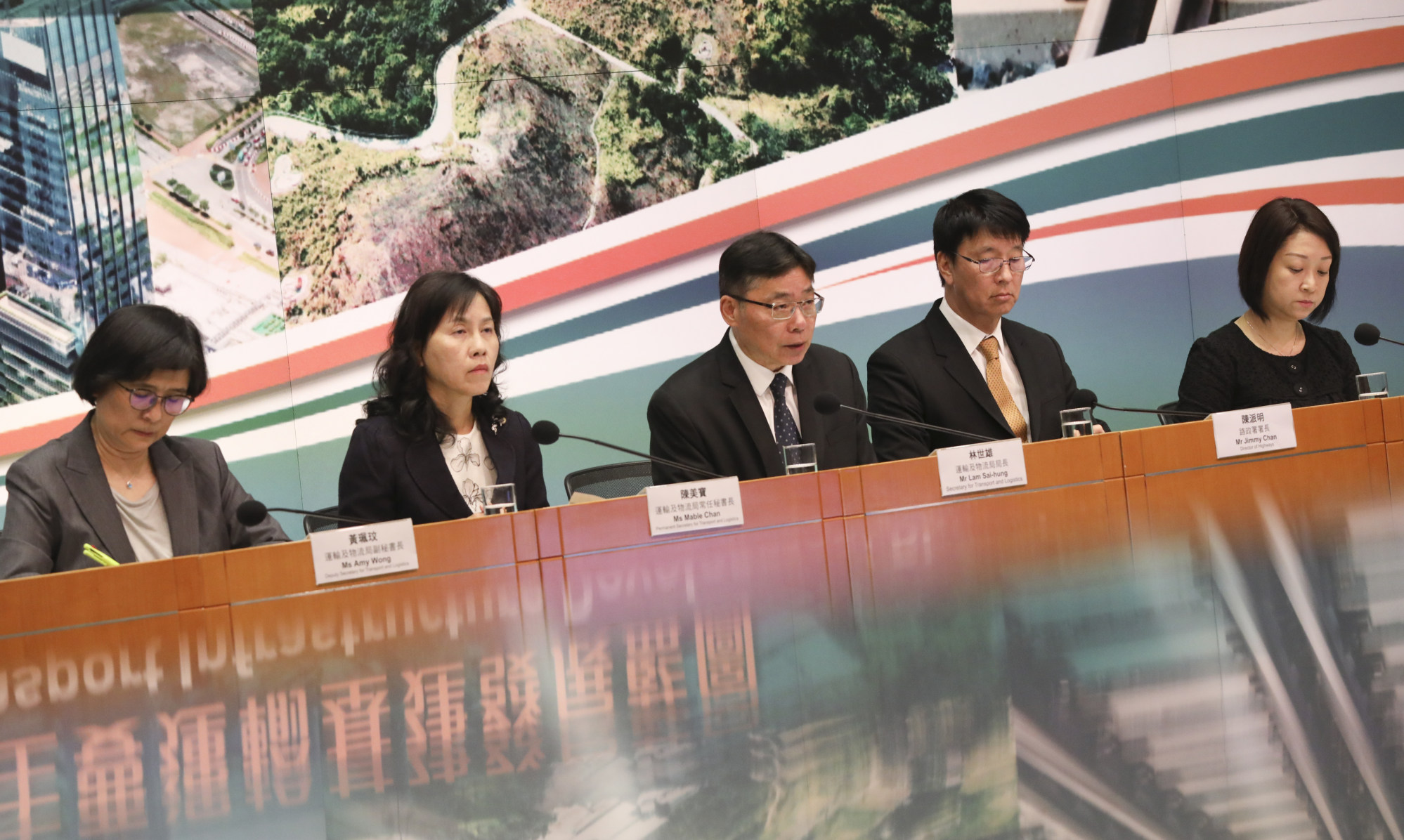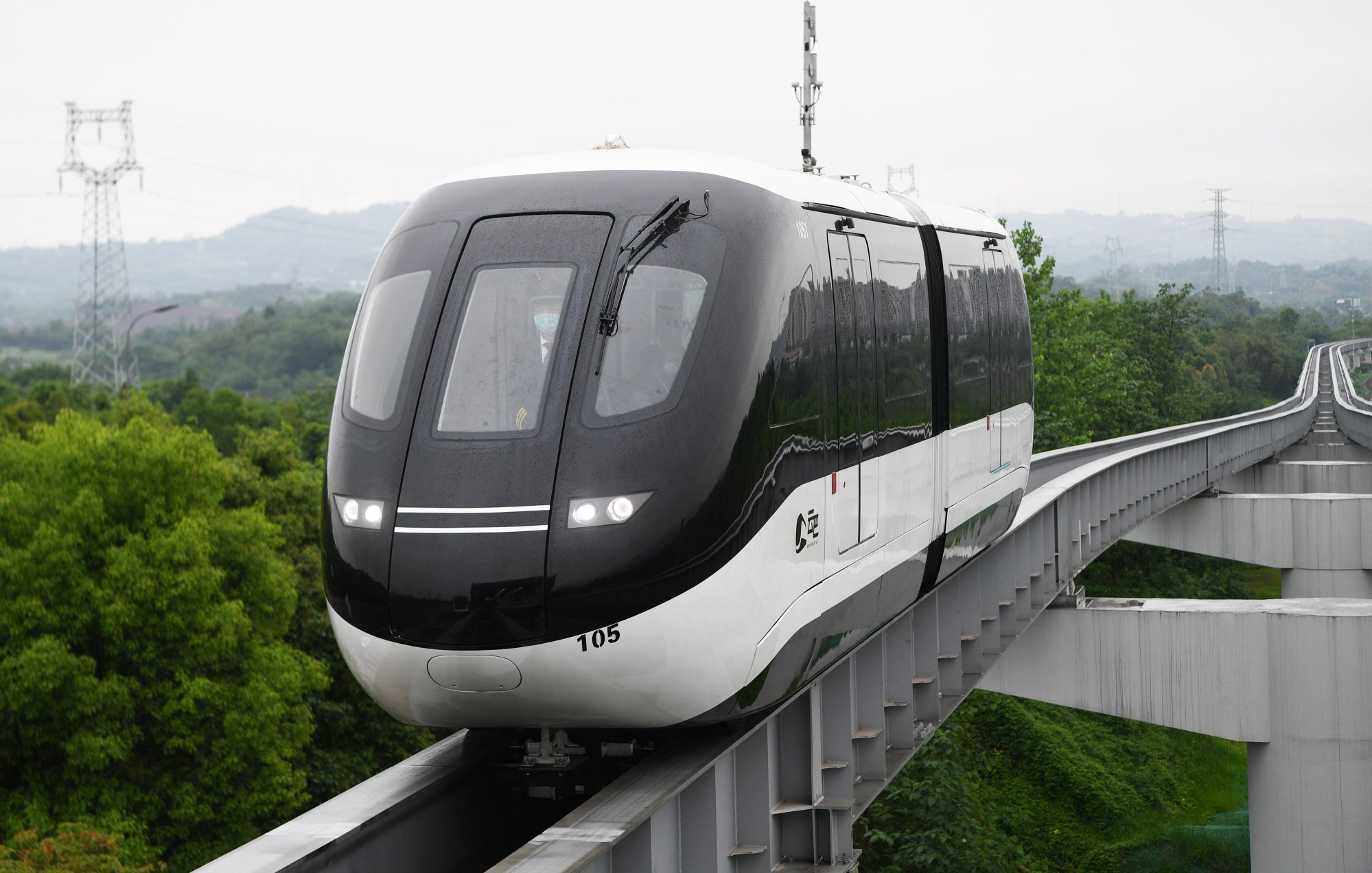
3 new Hong Kong mass transit systems will take at least 10 years to complete, transport chief says
- Government minister Lam Sai-hung unveils blueprint on future transport infrastructure development
- Smart and green mass transit schemes at East Kowloon, Kai Tak and Hung Shui Kiu face some technical difficulties, transport chief says
Planned mass transit systems in East Kowloon, Kai Tak and Hung Shui Kiu will take at least 10 years to complete as authorities may need longer than expected to overcome technical difficulties, Hong Kong’s transport minister has said.
Unveiling a blueprint on Hong Kong’s future transport infrastructure development on Tuesday, Lam Sai-hung said the government had decided to implement smart and green mass transit schemes in the three areas after considering systems such as the “SkyShuttle”, “Autonomous Rail Rapid Transit” and “Bus Rapid Transit”.
For the Kowloon East and Kai Tak transit systems, the authorities will invite suppliers or operators to submit expressions of interest next year so as to finalise the details for alignments, technical specifications and operational arrangements.

Lam, the secretary for transport and logistics, admitted the three projects might take longer than expected to finish due to some technical difficulties, pointing to the 2034 to 2038 time frame for completion outlined by the blueprint.
“For Kowloon East, the difficulty lies in the fact that the alignment will run along congested residential areas and at a hilly terrain so we need to plan and design the alignment that makes it viable,” he said.
“It will cause the least disturbance to the traffic as well as residents nearby so we need some time to do the analysis … so adding all these components together it may take 10 years or so for completing the project.”
The transport minister vowed to speed up project implementation so residents nearby could enjoy the transit system as early as possible.
The Hung Shui Kiu project will link the area to Yuen Long south, while the East Kowloon one will connect Kwun Tong uphill areas, including Choi Wan, Shun Lee, Shun On, Sau Mau Ping, Po Tat and Ma Yau Tong, to facilitate access to the MTR’s Choi Hung and Yau Tong stations.
The Kai Tak system, which will connect the old airport area to the Kai Tak MTR station, is a revival of a shelved project as part of a possible mix of mass transit systems for the 320-hectare (791-acre) district.
Gary Zhang Xinyu, vice-chairman of the Legislative Council’s railways subcommittee, slammed the decade-long completion time, especially given that construction at Kai Tak was technically easier than on the hilly East Kowloon project.
“The reason they chose green rail systems is because they are cheaper and faster to build compared with heavy rail. Ten years is too long, it’s ridiculous,” he said.
He added that the manpower crunch in the construction sector should not be a factor in the estimation as it was an issue the government had to solve.
“Companies can turn to digitalisation or import more labour,” he said. “A manpower shortage cannot become the norm or the reason it will take so long.”

The report said the government was considering putting the Hung Shui Kiu-Qianhai link to tender for construction and operation, with “rail plus property” remaining one of the arrangements for financing the projects.
However, Lam declined to be drawn on construction costs of the projects, saying it was still premature to estimate the price tag.
For the Central Rail Link, three intermediate stations at Northeast Tsuen Wan, Northeast Kwai Chung and Tsuen King circuit will be set up and transit to the Tsuen Wan line.


